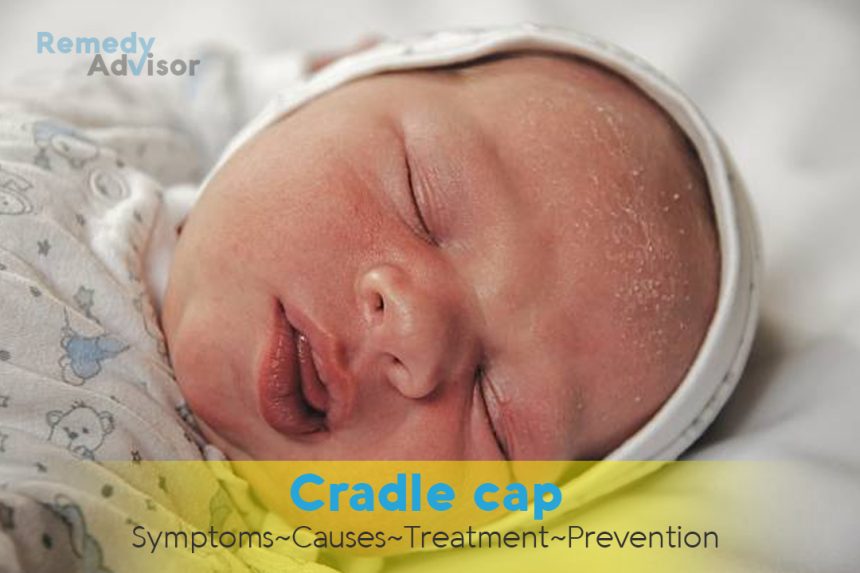What is it
Cradle cap is a common skin condition in infants marked by oily, yellow patches of scales on the scalp. It is very similar to dandruff in older children and adults. When it spreads to other areas of the skin, such as the eyebrows, it is known by the medical name seborrhea Cradle cap is most common in infants between three and nine months of age, but it can occur in children up to three years of age. It is not contagious. Typically, flare-ups will last for several weeks and then subside, but the condition often reappears.
Symptoms
- Thick, oily, yellow scales or patches on the scalp, usually in infants three to nine months of age.
- Scales may also be present behind the ears, around the eyebrows, or, infrequently, in the skin creases of the groin.
- Skin in affected areas may be slightly red; only rarely does the skin itch.
What causes it
No one knows the exact cause of cradle cap. A likely cause is the excessive release of sebum, an oily substance produced by glands in the scalp and other areas. Sebum accumulates in these glands, and then skin cells die and slough off, producing the oily scales.
What if you do nothing
Cradle cap is harmless, although it may be unsightly and does tend to recur. It should not, however, be left unattended- because the buildup of scales may weaken the underlying skin, predisposing it to infection. Cradle cap does not leave any scars or other lasting effects.
Home remedies
Most cases of cradle cap are easily treated at home. You will probably need to apply these measures for at least several consecutive days to clear up the condition. Cradle cap often recurs, so take preventive steps as well.
Loosen the scales
Massage warm mineral oil or baby oil into the scalp to loosen and soften scales. Leave it on overnight, or apply warm, moist towels over the oiled scalp for an hour or so. Make sure the towels stay warm so that the baby’s body temperature does not drop.
Then shampoo
In the morning, or after warm towels have been applied, wash the hair with a mild baby shampoo. Use special care when washing around the fontanelle, or soft spot but don’t overlook this area of the scalp. Remember that the skin covering this area is as resilient as the rest of the baby’s skin. Rinse thoroughly.
Avoid using over-the-counter dandruff shampoos on infants and young children unless your doctor instructs otherwise. These shampoos contain chemicals that could be harmful to an infant
Brush
To help minimize scale buildup, brush the baby’s hair daily using a soft-bristle brush, which will loosen any remaining scales. Scales can then be removed with a fine-tooth comb.
Prevention
No specific measures will prevent the first episode of cradle cap. Regular applications of oil as well as daily hair brushing may help prevent recurrences. Gentle shampooing at least twice a week may also help.







